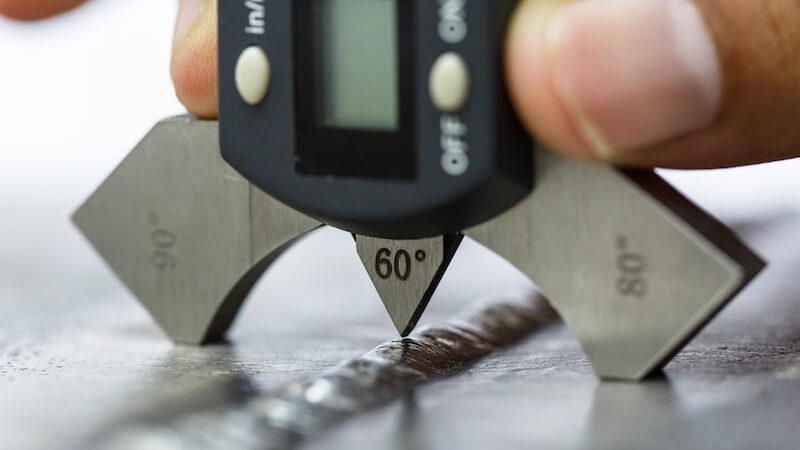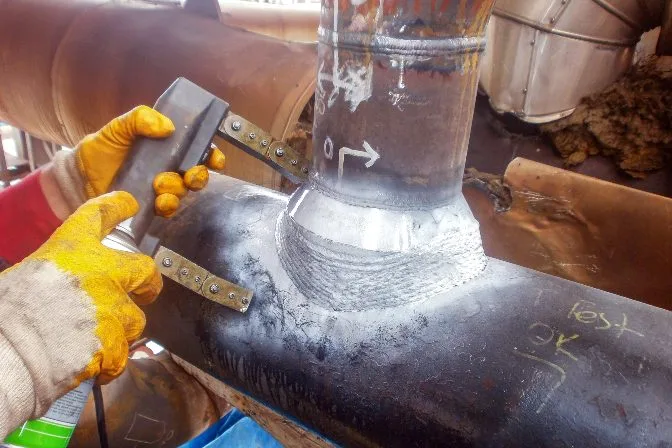How Welding Inspection Milwaukee Enhances Structural Integrity
How Welding Inspection Milwaukee Enhances Structural Integrity
Blog Article
A Comprehensive List for Effective Welding Examination Practices
In the realm of welding, the honesty of frameworks is extremely important, necessitating a strenuous approach to inspection techniques. A thorough checklist acts as a crucial device in ensuring adherence to market requirements, including necessary pre-welding, in-process, and post-welding assessments. By systematically dealing with product confirmation, weld high quality, and comprehensive documentation, organizations can substantially improve safety and efficiency. What details aspects should be prioritized in each phase to attain ideal results? Discovering these vital components can generate understandings that profoundly influence welding operations.
Understanding Welding Specifications
Welding standards play a critical function in making certain the high quality and safety and security of bonded components and frameworks. These criteria develop the requirements for products, treatments, screening, and assessment, therefore providing a framework for consistent quality guarantee in welding processes. Various companies, including the American Welding Society (AWS), the International Organization for Standardization (ISO), and the American Society of Mechanical Designers (ASME), have actually developed detailed criteria that govern different elements of welding.
Recognizing welding standards is necessary for professionals in the field, as adherence to these standards minimizes the risk of flaws and failings in bonded joints. These criteria cover specific demands for weld high quality, consisting of appropriate resistances, the kind of welding techniques to be used, and the certifications needed for assessors and welders.

Pre-Welding Assessment Steps
Before any kind of welding process starts, an extensive pre-welding inspection is necessary to identify prospective concerns that may endanger the quality of the weld. This preliminary action serves as an essential foundation for making sure conformity with appropriate welding codes and requirements.
The initial action in the pre-welding inspection is to confirm the materials being utilized. Next off, it is critical to inspect the fit-up of the components to guarantee appropriate positioning and joint setup.
Furthermore, examining the sanitation of the surface areas is crucial; impurities such as corrosion, oil, or paint can adversely affect the quality of the weld. Following this, an extensive evaluation of the welding devices ought to be carried out, guaranteeing that it is calibrated and in good functioning problem.
Last but not least, assessing the credentials of the welding workers is imperative. Welders have to have the needed accreditations and experience to carry out the particular welds required for the task. By sticking to these pre-welding evaluation steps, the likelihood of issues and failings in the final weld can be significantly reduced.
In-Process Inspection Strategies
In-process evaluation strategies play an important function in ensuring the stability and top quality of welds as they are being executed. These methods permit inspectors to determine flaws or deviations from specs in actual time, thereby making certain and preventing costly repair services adherence to layout requirements.
One key method includes aesthetic examination, where assessors assess the weld bead for you could look here uniformity, penetration, and appropriate profile. This can be matched by the use determines to gauge weld measurements, ensuring compliance with predetermined tolerances. Additionally, the implementation of non-destructive testing (NDT) methods, such as ultrasonic testing or magnetic particle testing, during the welding process can disclose subsurface flaws that might not show up on the surface.
An additional crucial facet is keeping an eye on welding parameters, consisting of voltage, amperage, and take a trip rate. Consistency in these parameters is vital for attaining optimum weld top quality. Recording these specifications during the welding operation gives a deducible document for future recommendation.
Training personnel in correct examination methods and using suitable tools enhances the effectiveness of in-process inspections. By incorporating these methods, organizations can attain greater high quality welds, decrease rework, and ultimately make certain the safety and security and dependability of welded frameworks.
Post-Welding High Quality Checks
Following the conclusion of welding operations, post-welding quality checks are critical to validate that the welds satisfy all specified requirements and criteria. These checks are necessary for making sure the integrity and durability of the bonded joints. The assessment process commonly begins with an aesthetic assessment, evaluating for surface flaws such as cracks, porosity, or insufficient fusion.
Consequently, non-destructive testing (NDT) techniques, such as ultrasonic testing, radiographic screening, or magnetic bit screening, may be used to discover internal imperfections that are not visible to the nude eye. Each method has its distinct benefits and is chosen based upon the weld's location, product type, and the nature of the application.
Evaluating the mechanical properties of the weld, including tensile toughness and ductility, can give additional guarantee of efficiency under functional conditions. Generally, extensive post-welding examinations are vital for maintaining performance, adherence, and view safety to governing and market standards.
Documentation and Reporting
Exactly how can effective paperwork and reporting improve the welding evaluation procedure? Exact documentation and extensive coverage are essential components that make certain the stability and quality of welding procedures. Welding Inspection Milwaukee. They act browse this site as a formal document of assessment searchings for, helping with liability and traceability in conformity with sector requirements

A well-structured coverage system enables examiners to clearly interact any areas, non-conformances, or disparities needing improvement. This transparency fosters a setting of constant improvement, as stakeholders can readily evaluate past performance and implement corrective activities.
Furthermore, effective paperwork includes detailed documents such as welding treatment specifications (WPS), welder certifications, and inspection lists. These aspects give a framework for reviewing weld high quality and adherence to established standards. In the event of conflicts or quality problems, detailed paperwork acts as a reliable reference, reducing ambiguity and protecting all parties included.
Lastly, maintaining arranged records aids in training and accrediting personnel, making certain that industry finest methods are supported. Eventually, meticulous documents and reporting not just boost the welding evaluation procedure however also add to the overall security and integrity of welded frameworks.

Conclusion
In final thought, a detailed checklist for reliable welding inspection methods is essential for making sure high quality and safety in welded structures. Adherence to developed welding criteria, careful pre-welding assessments, rigorous in-process evaluations, and comprehensive post-welding quality checks jointly contribute to the honesty of welded joints.
Welding requirements play a critical function in ensuring the quality and safety and security of bonded elements and structures. Various companies, including the American Welding Society (AWS), the International Company for Standardization (ISO), and the American Culture of Mechanical Engineers (ASME), have actually established comprehensive requirements that govern various aspects of welding.
Adhering to the conclusion of welding procedures, post-welding top quality checks are vital to validate that the welds satisfy all defined criteria and demands - Welding Inspection Milwaukee.In conclusion, a comprehensive list for efficient welding inspection techniques is essential for making sure top quality and safety in bonded frameworks. Adherence to established welding requirements, precise pre-welding evaluations, rigorous in-process analyses, and extensive post-welding quality checks collectively contribute to the stability of welded joints
Report this page